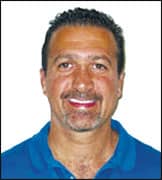by Alan Ruskin
Two orthodontists discuss how they set up imaging centers to offset the cost of CBCT
 |
With the advent of cone beam computer aided tomography (CBCT), 3D analysis of a patient’s oral cavity (and entire head) is getting more sophisticated by the day. This amazing technology is costly, though, and thus presents many orthodontists with the challenge of how to harness it in an efficient and affordable manner.
John Wise, DDS
For John Wise, DDS, orthodontics and trailblazing go pretty much hand in hand. From the time he opened his practice 17 years ago in Frisco, Tex, Wise has been a step ahead. He was the first orthodontist in what was then a rural town of 8,000 outside Dallas, and today he’s one of the first in the country to establish a community-based imaging center shared by a host of dental-related professionals including orthodontists, oral surgeons, periodontists, restorative dentists, and endodontists.
When Wise found a CBCT machine he was interested in buying, he noted the cost and stopped to consider: “The machine, the i-CAT CBCT, is outstanding technology, but expensive, about $200,000, with significant added costs for software and training, bringing the total to around $250,000. It looked like the way to go was for a bunch of us to pool our resources and share the technology in an economical fashion that cost everyone a lot less than if they purchased it on their own.”
Getting Started
In 2007, Wise and two other orthodontists, including his partner, Doug Jensen, DDS, put together a limited partnership consisting of 18 doctors from all of the dental specialties. Called OrthoDent 3D Imaging, the new business was housed in a 1,000-square-foot facility in nearby McKinney, Tex, which, like Frisco, had by this time grown to a population of more than 100,000.
 |
 |
| John Wise, DDS | Cy Alizadeh, DDS |
“We set it up as a community-based facility,” Wise says. “We want all the doctors to feel comfortable. There’s a large conference room where any doctor can host a meeting, complete with audiovisual enhancements to allow presentation and discussion of complex cases, as well as study clubs. The room easily accommodates 10 to 15 doctors.”
The imaging center also includes a front office and waiting room, a business area, kitchen, bathroom, and, of course, the imaging room with the i-CAT machine. Patients are seen one at a time, and “it’s a safe environment,” Wise notes, “with lead-lined walls.”
Sharing Knowledge
In addition to all of the high-tech hardware, OrthoDent uses two types of software: InVivo, the basic diagnostic software for achieving a digital representation of the patient’s teeth, and SureSmile, by Orametrix. “With the SureSmile scanner,” he says, “you can move teeth to very precise positions down to 30 microns of accuracy. For the first time we can see the roots, which is what we actually move in order to reposition the teeth, so to be able to see those roots is really quite extraordinary.”
How has cone beam technology affected Wise’s practice? “Treatment is much more efficient, with treatment time reduced by 20% to 25%.” And the cost to the doctor? The orthodontist pays SureSmile a fee to use its technology, generally $600 to $1,100 per case. “However,” Wise explains, “that cost isn’t passed on to the patient, but is included in the basic fee for braces. The technology allows us to treat patients faster with fewer visits, typically reducing the treatment time from 20 to 10 to 12 months, thus reducing other costs, so the cost to the patient remains the same.”
Wise also sees applications of the imaging center that go beyond dental professionals. Because the i-CAT provides a view of both the entire head and neck, he believes that ear, nose and throat physicians, and anyone working in those areas, could benefit greatly from the technology. “Right now, it’s just dental people, but it’s excellent for those working in the head and neck region, as well as the upper spine. We’re open to any doctors who can benefit from using the center.
“A big part of the rationale in having these centers,” Wise says, is that they’re community-based shared facilities. “To our knowledge, ours is the only one owned entirely by dental professionals. Currently, most i-CATs are hospital-based or individually owned. Our concept is unique, and we hope to duplicate it in communities throughout the country.”
Wise emphasizes the advantages of shared ownership of the technology. “Because of the magnitude of power of the machine, and the steep learning curve, an orthodontist or other dental professional may be able to tap only 5% to 10% of the potential capabilities of an individually owned i-CAT. Considering that, as well as the cost, it’s better to share and maximize the functionality of the machine.”
Hurdles to Overcome
“Doctors usually like to have control of their technology,” Wise says, “having their imaging capabilities right there, as has been the case with the traditional cephalometric and panoramic imaging. So this is a little unusual, in that the doctors have to get over the hurdle of patients having to leave their office to have their imaging done.” But once they learn the advantages of a nearby community-based center with a single trained technician, Wise believes they will “see that someone else can do the ‘heavy lifting,’ and take beautiful, pristine pictures time after time,” and will be convinced of its value.
One issue that Wise believes has gotten in the way of broader acceptance of the technology is the liability factor, which he believes has been erroneously played upon. “Because you can see the entire head and neck region in full 3D, lots of information may become apparent, including the presence of malignancies. So the question of liability may arise.” But, he says, “There have been zero lawsuits thus far in the 6 to 7 years that CBCT has been available. Somebody keeps repeating that there’s a problem, but there really isn’t any. I believe it’s essentially a bogus issue that is drummed up by competitors in the cephalometric and other imaging product industries.
“We’re all out there on a limb every time we work on a patient. Different potential liabilities have always existed, but you can’t let fear get in the way. Doctors need to have confidence in this advanced technology and use it for the patients’ benefit. It can revolutionize dentistry if they’re not afraid to use it.”
On a personal note, Wise believes, “it’s important to give back to the community. As an orthodontist, I think it’s time to get back together with the rest of the dental community. Orthodontists have set themselves aside too much; there’s been a disconnect for many years. The shared imaging center is a great way to mend that void by working together with dental professionals from different specialties.”
Wise has a tip for orthodontists who might consider opening an imaging center like his own. “You can start from scratch or you can use our successful model as your blueprint. We would like to establish more centers to benefit both doctors and patients, so we’re open to talking with any interested parties.”
Regarding his community-based philosophy, Wise is active on many fronts in addition to the imaging center. He is chairman of a committee working to establish a local chapter of Smiles Change Lives, a philanthropic organization that, with the help of caring orthodontists, donates braces to underprivileged youngsters. He’s also a board member of the Texas Dentists for Healthy Smiles Foundation, as well as a past president of the Frisco Chamber of Commerce.
A fourth-generation Texan, his pioneering and gracious attitude is summed up in his own words: “Part of being a great orthodontist is being a lifelong student. I’m always learning the latest technical advancements and new research about dental and orthodontic health.”
Cy Alizadeh, DDS
Another orthodontist active in the imaging arena, Alizadeh supports the notion that there’s a lot of money to be saved by a group of doctors pooling their resources and operating a cooperative imaging center. However, at his 21-year-old practice in the suburban St Louis area, where such centers are currently nonexistent and, due to lack of demand, not yet on the proverbial radar screen, there’s another issue that is key with Alizadeh: how to utilize the CBCT technology in a productive and efficient manner.
When he and his partner, Becky Schreiner, DDS, moved to their new, larger office in 2006, an i-CAT was included in their total facilities package. The 6,000-square-foot space allowed them to access the i-CAT room either through the orthodontic office or from a separate hallway in the building.
“I’ve always liked being on the cutting edge,” Alizadeh says regarding the decision to use the cone beam 3D technology. He had also been considering incorporating SureSmile into his practice, and from inquiries he made to the company, he knew that it would be getting heavily into 3D imaging. Since the i-CAT is currently the only 3D imaging technology that works with the SureSmile system, it was clearly an appropriate choice. Along with SureSmile, Alizadeh uses Dolphin Imaging software to process and analyze the diagnostic images.
He regards the i-CAT as a “fantastic tool,” but he also notes that his use of it has evolved to the point where he is more selective about which patients he uses it with. “At the beginning, we thought we would take 3D images of all the patients, but we learned it’s not for run-of-the mill cases,” he says. In these cases, traditional orthodontics, including the customary panoramic imaging, will usually suffice. However, because of the time savings that the SureSmile system can provide, he generally offers it as standard procedure to his adult patients, who “appreciate the shorter length of time that they will be wearing the braces” and are willing to accept an additional cost of approximately $500. Parents of child patients, on the other hand, are always offered the option of the less expensive but lengthier standard treatment, which the younger patients are better able to tolerate, according to Alizadeh.
With Great Power Comes Great Responsibility
There are some possible negatives to consider as well, Alizadeh points out, including the “added dimension of an increased workload due to the longer time it takes to look through all the digital slices involved in the 3D imaging. A 2D image is easier to review.”
Another potential drawback of the thorough in-depth imaging is the possibility of revealing pathologies, such as cancer. “If you spot something unusual,” Alizadeh says, “you have to note it and send it to a radiologist to be read and diagnosed.” In raising again the problem discussed by Wise, he adds, “A waiver signed by the patient doesn’t necessarily free you of responsibility of liability.” There is also the issue of radiation associated with cone beam imaging, but, he points out, “the level of radiation with a cone beam scanner is much less than [that with] a medical scanner. However, radiation exposure is still a reason for the prudent use of the technology and for not using it on every patient.”
|
For more information on the companies mentioned in this article, check out our online Buyer’s Guide. |
Alizadeh’s advice to orthodontists considering embracing the cone beam technology on their own is, “I wouldn’t want anyone to expect that by opening their own imaging facility—that is, without teaming up financially with others—that they’ll be able to easily pay for the machine…. As the machines become more available, referrals will become more competitive and it will be less likely that you can offset the cost on your own.” Agreeing with Wise, he concludes, “Cost is a limiting factor, so doctors should look for ways to share that.”
Alan Ruskin is a staff writer for Orthodontic Products. For more information, contact










